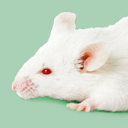| MGP_BALBcJ_T0038689.1 | - | 5426 | 1704aa | MGP_BALBcJ_P0038689 | Gene/transcipt that contains an open reading frame (ORF).Protein coding | CCDS36851 | D3YYF2 D3YYG4 D3Z1M8
D3Z1N4 D3Z1W6 D3Z3R4
D6RI94 D6RIL0 E9Q4Y5
E9Q7L2 E9Q7L3 F6THL5
F8VQD1 Q8BSQ9 | A single transcript chosen for a gene which is the most conserved, most highly expressed, has the longest coding sequence and is represented in other key resources, such as NCBI and UniProt. This is defined in detail on http://www.ensembl.org/info/genome/genebuild/canonical.htmlEnsembl Canonical, |
| MGP_BALBcJ_T0038690.1 | - | 8020 | 1634aa | MGP_BALBcJ_P0038690 | Gene/transcipt that contains an open reading frame (ORF).Protein coding | | - | - |
| MGP_BALBcJ_T0038703.1 | - | 6325 | 1689aa | MGP_BALBcJ_P0038703 | Gene/transcipt that contains an open reading frame (ORF).Protein coding | | - | - |
| MGP_BALBcJ_T0038701.1 | - | 5952 | 1582aa | MGP_BALBcJ_P0038701 | Gene/transcipt that contains an open reading frame (ORF).Protein coding | | - | - |
| MGP_BALBcJ_T0038693.1 | - | 5154 | 1602aa | MGP_BALBcJ_P0038693 | Gene/transcipt that contains an open reading frame (ORF).Protein coding | | - | - |
| MGP_BALBcJ_T0038696.1 | - | 5065 | 1582aa | MGP_BALBcJ_P0038696 | Gene/transcipt that contains an open reading frame (ORF).Protein coding | | - | - |
| MGP_BALBcJ_T0038699.1 | - | 5009 | 1652aa | MGP_BALBcJ_P0038699 | Gene/transcipt that contains an open reading frame (ORF).Protein coding | | - | - |
| MGP_BALBcJ_T0038700.1 | - | 4843 | 1597aa | MGP_BALBcJ_P0038700 | Gene/transcipt that contains an open reading frame (ORF).Protein coding | | - | - |
| MGP_BALBcJ_T0038697.1 | - | 4388 | 1460aa | MGP_BALBcJ_P0038697 | Gene/transcipt that contains an open reading frame (ORF).Protein coding | | - | - |
| MGP_BALBcJ_T0038704.1 | - | 3256 | 1085aa | MGP_BALBcJ_P0038704 | Gene/transcipt that contains an open reading frame (ORF).Protein coding | | - | - |
| MGP_BALBcJ_T0038692.1 | - | 3137 | 931aa | MGP_BALBcJ_P0038692 | Gene/transcipt that contains an open reading frame (ORF).Protein coding | | - | - |
| MGP_BALBcJ_T0038691.1 | - | 485 | 91aa | MGP_BALBcJ_P0038691 | Gene/transcipt that contains an open reading frame (ORF).Protein coding | | - | - |
| MGP_BALBcJ_T0038694.1 | - | 434 | 84aa | MGP_BALBcJ_P0038694 | Gene/transcipt that contains an open reading frame (ORF).Protein coding | | - | - |
| MGP_BALBcJ_T0038698.1 | - | 4971 | 860aa | MGP_BALBcJ_P0038698 | | | - | - |
| MGP_BALBcJ_T0038702.1 | - | 4759 | 856aa | MGP_BALBcJ_P0038702 | | | - | - |
| MGP_BALBcJ_T0038695.1 | - | 871 | No protein | - | Gene/transcript that doesn't contain an open reading frame (ORF).Processed transcript | | - | - |
| MGP_BALBcJ_T0038705.1 | - | 817 | No protein | - | An alternatively spliced transcript believed to contain intronic sequence relative to other, coding, transcripts of the same gene.Retained intron | | - | - |

